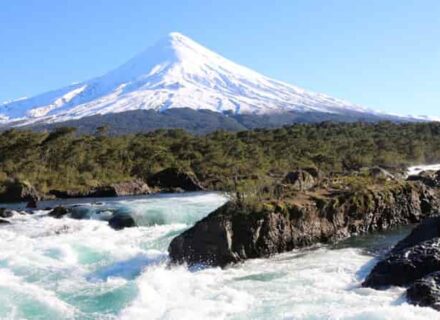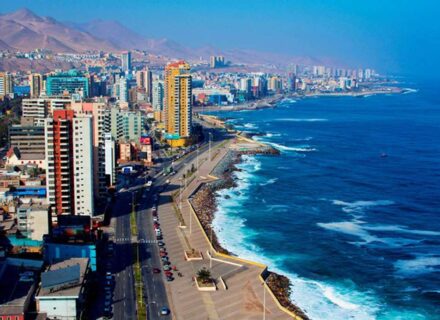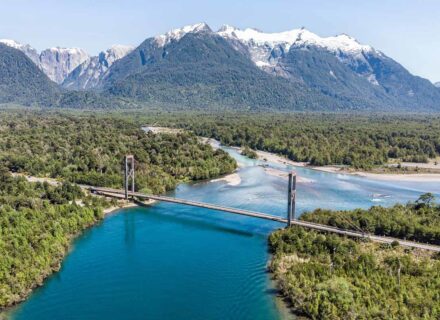So it did escape my attention that Arequipa was located at altitude. My first dalliance with it this trip. I really don’t like it, hopefully my body adjusts so the headache, lethargy and nausea bugger off. Paracetamol is always a girls best friend.
Happily Arequipa is a lovely city nestled among snow capped mountains/volcanoes. As usual the city centres around a colonial square surrounded by beautiful old buildings complete with the intricate wooden balconies and a huge grand church. We had a couple of days here to wander, eat and enjoy the nightlife. Coincidentally I don’t recommend hangovers at altitude, brutal and long lingering.
Not only is the city beautiful, there was the opportunity to upgrade, no camping for me! Instead we stayed in a lovely colonial building. Our room had a balcony overlooking a beautiful rose garden scattered with tents of those who chose to camp. Unfathomable to me. Kids these days.
Arequipa is home to Juanita, the very famous ice maiden who was discovered in the 90′s just inside Mt Misti, one of the bigger volcanoes. Things didn’t end so well for Juanita, she was an Inca human sacrifice at the tender age of 13ish (one of many now discovered). As the sacrifice took place so high she pretty much froze in her grave after death meaning she is perfectly preserved. Looking at a 500 year old frozen person with skin, hair, nails, etc intact is slightly disconcerting.
Another famous attraction is of all things a convent. Turns out it is basically a walled city within a city. Back in the day the nuns here were a little naughty, all having being recruited from rich families in Spain. Men folk somehow got behind the walls until the pope got wind. These days there are only a few nuns in situ. It’s a beautiful oasis in the middle of a bustling city. Cobbled streets, walls painted in blues and reds, little squares filled with bright flowers and peace and quiet.
Emmett and I decided on the optional trip to Colca Canyon, said to be the deepest in the world and also home to the ugly, but massive Condor. Hours of driving had us up by Mt Misti at almost 5000 above sea level, breathing was an issue, then on through Colca valley. For not the first time this trip I wondered what the hell these people do! They are in the middle of nowhere, it’s dusty and there is really nothing there. All up, my nightmare. Apparently they are all farmers (alpacas, corn, quinoa, etc) but have been deserting the area in droves leaving mainly the old or the very young behind.
Anyway 5 hours or so later of bone rattling roads we arrived at the canyon and indeed it is very deep. Impressive, but much like the Grand Canyon, I wasn’t blown away. That said it was pretty special to just sit there and take it all in, especially when a couple of Condors finally glided overhead. From the distance we were unable to see their rather unattractive heads, so they looked beautifully majestic.
Stopping at a tiny, dusty town, another activity bar farming was displayed to me for the first time. Old ladies and young Girls dressed up in the very colorful (surely impractical?) local dress; brightly colored heavy A-line skirts (with a couple layers underneath!), embroidered blouses, cardigan, bowler hats perched precariously atop their heads with multicolour woven blankets rigged around them like a sling. They approach you with very young, very cute baby alpacas and/or sheep either poking out of their sling or cradled in their arms. The unsuspecting take a photo and then pow, they hassle you for money. Crafty!
Our accommodation in the middle of nowhere was delightful, a rustic hotel up a hill looking down to the valley. The very inviting hammocks meant I bowed out of the hike up to some Inca ruins. I didn’t want to ruin Machu Pichu, or more to the point i didn’t want to walk. I blame altitude. My lovely hammock time was abruptly interrupted when I looked up from my book to see an alpaca/llama (it was a cross) staring at me from spitting distance. After a traumatic experience at the Adelaide petting zoo involving a flower hat and a llama i am somewhat wary of the beasts. Turns out it was the hotels pet which had been beaten as a small alpaca and was now very fond of spitting, as our guide Anto later found out. Fair enough too I guess. A delightful dip in the local hot springs finished the day off nicely.
Finally it was time for the long drive to Cusco. I had been looking forward to this bit of the trip with equal parts excitement and in-trepidation, the Inca trek begins here. The drive was typical of what I had seen of Peru; dry and rocky on the most part with little villages/towns scattered about, then you come around a bend and it’s green and fertile. Usually it’s all framed by snow capped mountains. All quite rugged and not the most hospitable terrain. I can’t begin to imagine how difficult life must be for the locals. That said I guess it’s what your used to. Makes me extremely grateful for what I’m used to.
Cusco is a big city built up a hill and again, at altitude. Driving in looks much like a shanty town but as you get closer to the centre things change dramatically. Cusco was the home of the kings of the Incas, then the Spanish invaded and made it their capital. Due to this the history, architecture and ruins of the city are absolutely amazing.
The big town square is surrounded on two sides by huge, intricate, beautiful cathedrals (the two different denominations were trying to out do each other), largely built using stones from nearby Inca temples. They are built atop the palaces of Inca kings (all largely destroyed by the delightful Spanish invaders) which were built using huge rocks and no mortar, all fitting absolutely perfectly. Through various earthquakes the Inca portion have suffered very little damage whilst the Spanish additions have been partially demolished at various times. Those Inca’s were onto something.
Getting into Cusco it is pretty much universally recommended to take it easy due to the altitude so we did just that. Since Columbia, amazing, fresh fruit juice of all varieties (plus others you’ve never heard of) had been in short supply. Imagine my delight when the restaurants of Cusco provided not only amazing juices, but delicious western foods too. A much needed break from Chicken and chips (ironically a favourite at home). Satay, lasagna, pizza, sandwiches, burgers, veggies…..heaven. Plus I could easily justify it all with “carb loading for the trek”.
Cusco was also my first introduction to many Peruvians favourite thing, the Coca leaf. They chew it, drink it and turn it into candy. Not only does it help with altitude sickness, it suppresses hunger and it is full of vitamins and minerals. For those living at altitude it is a part of daily life, they even offer it to their earth god, Pacha Mamma. The dodgy looking guys on the street offer it in its chemical form, cocaine. The US are not Coca farmers friends for this reason.
Walking around Cusco, though tiring, was a great pastime. Tranquil squares scattered everywhere, 500 year old buildings, churches and convents, cobbled streets with the lovely brightly dressed locals, largely the Inca descendants, Quechans, all going about their business. I can easily see how travelers get ‘stuck’ there.
Being good tourists, on that day anyway, we thought we should get out and see some Inca ruins surrounding Cusco. The first is in the city and was one of the most important buildings to the Inca’s, The temple of the Sun. At the height of their power perfectly built rooms (no grout needed) were completely covered in gold and silver. Of course when the Spanish came they stripped the precious metals and built a church/convent over it. Very cool as now it is half original Inca building, half colonial Spanish. The difference in the quality of workmanship is astounding.
Heading out of Cusco on the hill overlooking the city is Saqsayhuaman, pronounced sexy woman. Seriously. This was a huge temple built with massive rocks, some nearly 200 tonne, all fitting perfectly and polished to perfection. Many of the stones were liberated by the Spanish to build the many churches in Cusco to convert the heathens.
Quenco was my favorite ruin. From a distance it just looks like a massive collection of rocks. On closer inspection the Inca have carved a snake like passage into the biggest one which leads to an underground chamber in the rock. Holding center court is a massive natural stone table. Jury’s out on whether this is where mummification took place, or sacrifices. Either way, ick.
The last ruin we checked out was an old Inca lodging for those making their way to the capital. Amazingly the aqueducts that supplied the area with water are still running over 500 years later. All very hard to get one’s, or mine anyway, head around.
With time almost up before the big trek it was time to stock up on supplies, just incase. I went into the deli looking for biscuits and chocolates and almost came out with a French bulldog puppy, Luna. Her owner told me she was priceless, i begrudgingly agreed (though have began plotting the introduction of a French bulldog to my furry clan). At the very least she took my mind off the task at hand. I’d be lying if I said I wasn’t nervous about the next four days to come. I don’t like climbing mountains at the best of times, but in this horrible altitude….God, what was I thinking? Wish me luck!!!



